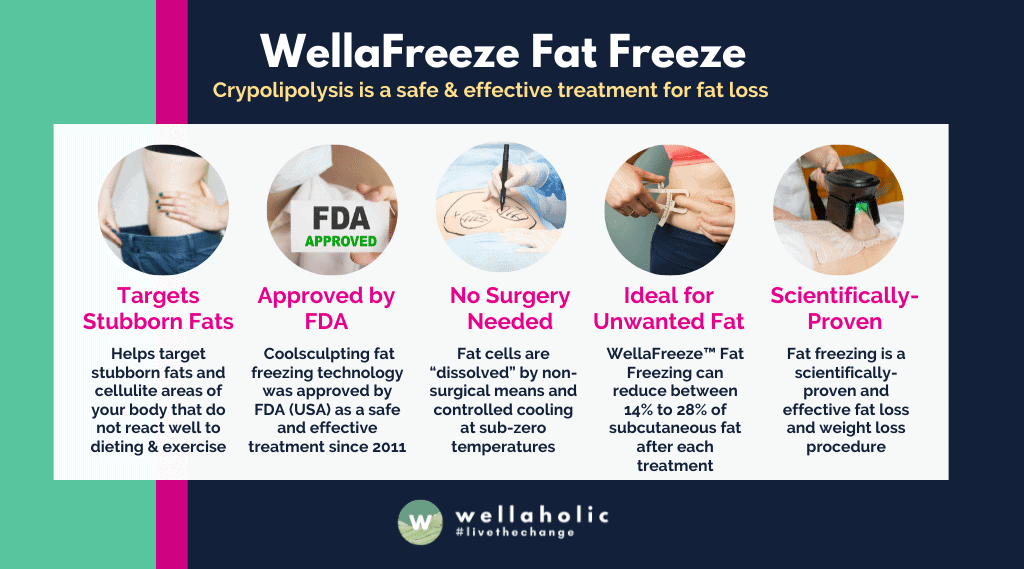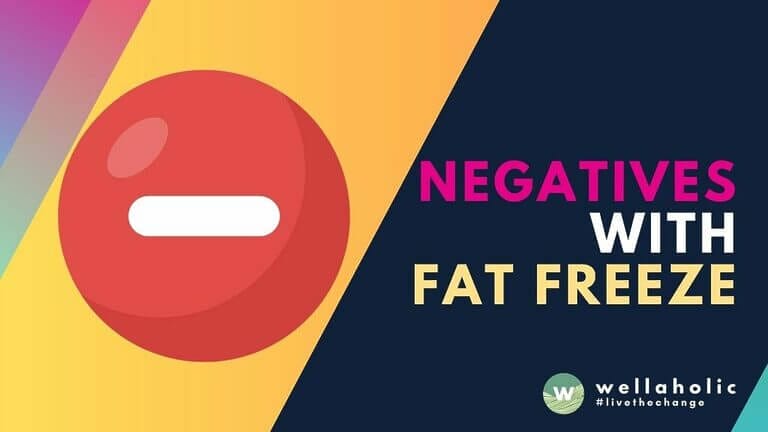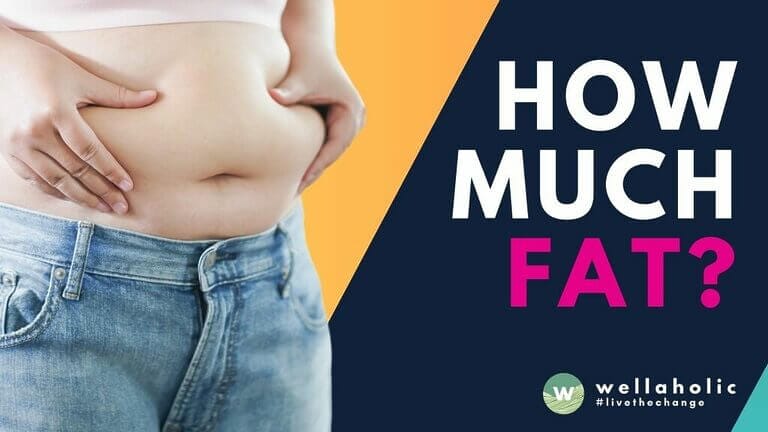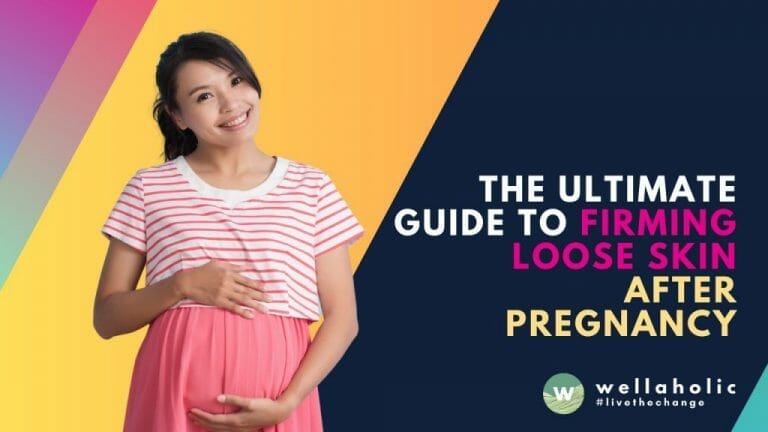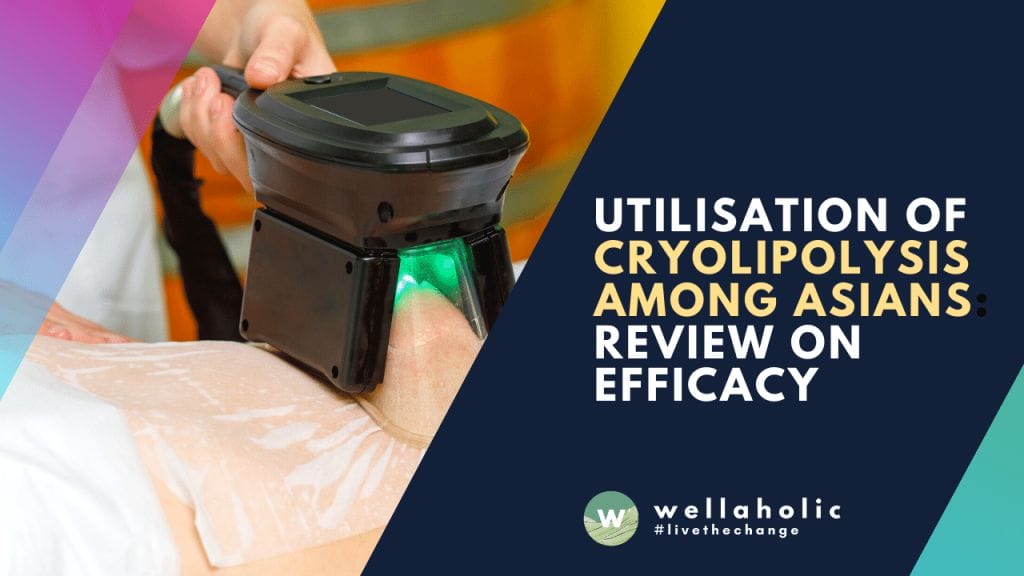
Cryolipolysis for Asians: Efficacy Review by Wellaholic
Table of Contents
- 0.1 TL:DR Summary
- 0.2 Wellaholic Research: Utilisation of Cryolipolysis among Asians: A Review on Efficacy and Safety
- 0.3 Background of Research
- 0.4 History of Cryolipolysis
- 0.5 The Utilisation of Cryolipolysis and Its Efficacy
- 0.6 Efficacy Comparison with Other Non-Invasive Fat Reduction Methods
- 0.7 Efficacy and Safety Profiles in Asian Population
- 0.8 Conclusion
- 0.9 Source
- 0.10 Frequently Asked Questions (FAQ)
- 0.11 Book Now Pay Later
- 0.12 WellaFreeze™ 360 Advanced Fat Freezing
- 1 Wellaholic Research: A Comprehensive Review on the Efficacy and Safety of Cryolipolysis among Asians”
TL:DR Summary
- Cryolipolysis: A Non-invasive Method to Reduce Fat Cells with Cold Exposure – Cryolipolysis is a FDA-approved procedure that uses cold to destroy fat cells without harming other tissues.
- Cryolipolysis among Asians: A Review of Efficacy and Safety – The article reviews four clinical trials conducted exclusively in Asian populations, showing positive results and minimal side effects.
- How Cryolipolysis Works: The Science Behind Fat Freezing – Cryolipolysis induces apoptosis of fat cells, which are then cleared by natural inflammatory processes over 3 months.
- What Cryolipolysis Can Do For You: Benefits and Outcomes – Cryolipolysis can reduce fat thickness up to 20% in one session, improve body contour and shape, and boost self-confidence.
- Who Can Benefit From Cryolipolysis: Candidate Selection and Expectations – Cryolipolysis is suitable for anyone who wants to get rid of stubborn fat deposits that are resistant to diet and exercise.

Wellaholic Research: Utilisation of Cryolipolysis among Asians: A Review on Efficacy and Safety
Wellaholic’s Commitment to Research in Slimming Techniques
Welcome to an exclusive insight into the world of Cryolipolysis, brought to you by Wellaholic, Singapore’s leading aesthetic chain. With over 7 years of experience, 8 outlets island-wide, and a stellar reputation backed by more than 2000 authentic positive reviews and over 30 industry awards, Wellaholic is your trusted authority in the field of body contouring and slimming treatments.
In this comprehensive review, we delve into the utilisation of Cryolipolysis among Asians, a topic that is at the forefront of our in-house research. Our commitment to staying ahead in the field of body sculpting technologies and trends involves a deep dive into various case studies and reports from esteemed dermatological and medical journals. This ensures that we are not just informed, but are pioneers in the latest advancements in this field.
Spotlight on 2019 Research Paper: Cryolipolysis Among Asians
In a 2019 research paper by Iman Budi Putra, Nelva Karmila Jusuf, and Nani Kumala Dewi, the team investigated and provided a comprehensive review of the utilization, efficacy, and safety profiles of cryolipolysis among Asians. At that time, there were only four clinical trials conducted solely in an Asian population, with two studies carried out in Korea, and the others in China and Thailand. Read on below to learn more about their insightful findings.
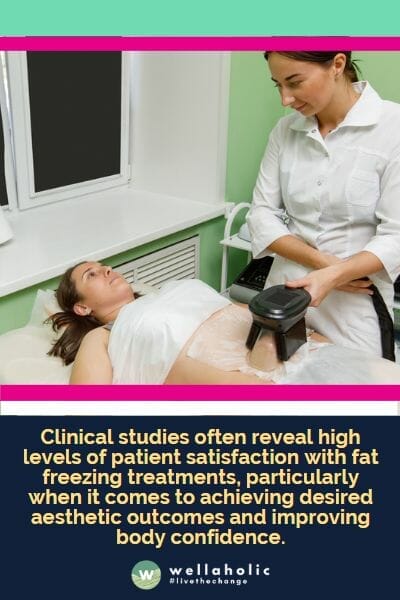
Background of Research
The Growing Demand for Body Contouring
Body contouring, also known as body sculpting, has witnessed a global surge in demand, making it one of the most sought-after cosmetic procedures in the past decade. In 2015, 230,000 procedures were performed by dermatologic surgeons in the United States alone. Furthermore, a consumer survey conducted by the American Society for Dermatologic Surgery (ASDS) in 2018 revealed that body contouring topped the list of most popular treatments.
Shift towards Non-Invasive Procedures and Cryolipolysis
Traditionally, liposuction was the most common cosmetic surgery procedure for reducing focal fat tissue. However, due to associated risks such as infection, nerve damage, hematoma, and the high cost, the focus has shifted towards non-invasive procedures. The US reported a 42% increase in non-surgical fat reduction procedures in 2014. Some leading non-invasive body contouring treatments, like low-level laser therapy (LLLT), cryolipolysis, radio frequency (RF) and high-intensity focused ultrasound (HIFU), have shown consistent effectiveness in reducing local fat tissue without any serious or permanent side effects.
Cryolipolysis, in particular, is an advanced non-invasive fat reduction method that can significantly decrease subcutaneous adipose deposit without harming surrounding tissues. This FDA-approved method, based on the highly selective apoptosis of adipocytes with cold exposure, can reduce fat thickness by up to 20% in just one session.
Cryolipolysis Among Asians: Efficacy, Safety and Hypopigmentation Risk
Cryolipolysis boasts a commendable safety and efficacy profile. It offers a short recovery period, minimal side effects, and significant improvement within four months after a single session treatment. However, most clinical studies on cryolipolysis have been conducted among Caucasians, with only a small number involving Asians.
Cryotherapy use in darker skin is linked with a higher risk of hypopigmentation. Since the Asian population generally has darker skin compared to Caucasians, predominantly featuring Fitzpatrick skin types III, IV, and V, a review of cryolipolysis usage among Asians is crucial. Such a review is necessary to bridge the knowledge gap in its efficacy and safety profile, especially for this population.
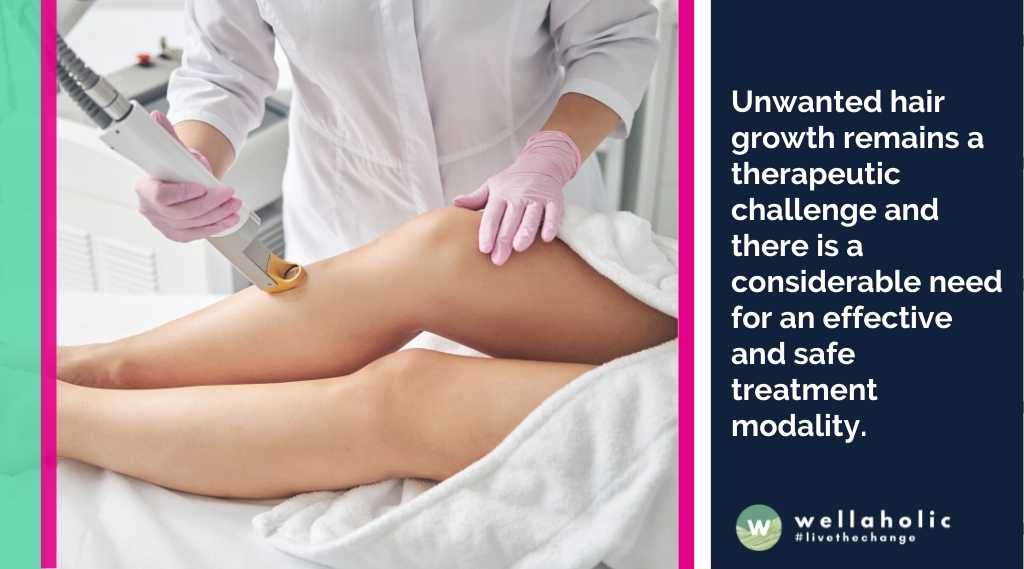
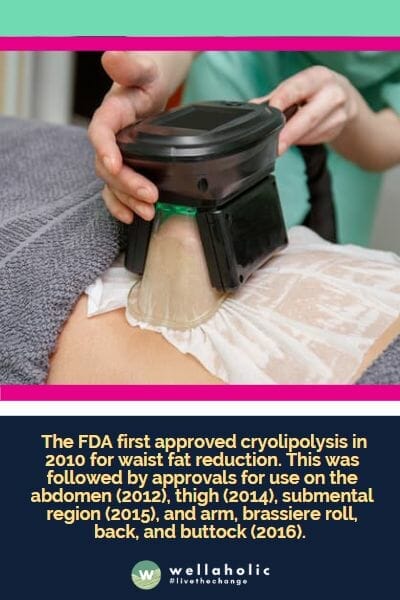
History of Cryolipolysis
The Historical Development of Cryolipolysis
The inception of cryolipolysis traces back to 1902, with observations made on adipocyte cell sensitivity to cold trauma. The term “adiponecrosis e frigore” was coined by Haxthausen in 1941 to describe wounds inflicted by exposure to extreme cold. This formed the basis of using cold-induced panniculitis, reported between 1940 to 1970, for body contouring. In 1970, the concept of “popsicle panniculitis,” transient fat necrosis due to cold exposure, was introduced. Further evidence of fat-rich tissue being more susceptible to cold trauma compared to water-rich tissue was reported.
Pre-Clinical and Animal Studies on Cryolipolysis
In 2007, Manstein and his team conducted a pre-clinical study on Yucatan pigs to examine the effect of low-temperature exposure on subcutaneous fat tissue. They observed an 80% reduction in superficial fat tissue and a 40% decrease in fat thickness in the treatment area within 3.5 months. No damage to the surrounding tissues was noted. These effects were more pronounced at lower temperatures and 28 days post-treatment. Based on these findings, the procedure of non-invasive fat reduction by freezing, known as cryolipolysis, was introduced in 2007. Zelickson and his team also found similar results, confirming the efficacy of cryolipolysis without side effects.
Human Clinical Studies and Commercial Usage of Cryolipolysis
Human clinical studies have been conducted to evaluate the efficacy and safety profiles of cryolipolysis for fat tissue reduction. The FDA first approved cryolipolysis in 2010 for waist fat reduction. This was followed by approvals for use on the abdomen (2012), thigh (2014), submental region (2015), and arm, brassiere roll, back, and buttock (2016). The latest device applicator recommendations include lower temperature within shorter durations, lower risk of hematoma, no vacuum pressure handle, and higher patient satisfaction rates.
In 2012, Shek and his team reported the first commercial experience of cryolipolysis exclusively in the Chinese population. Subsequent studies were carried out in Korea and Thailand to further investigate its application on various body parts.
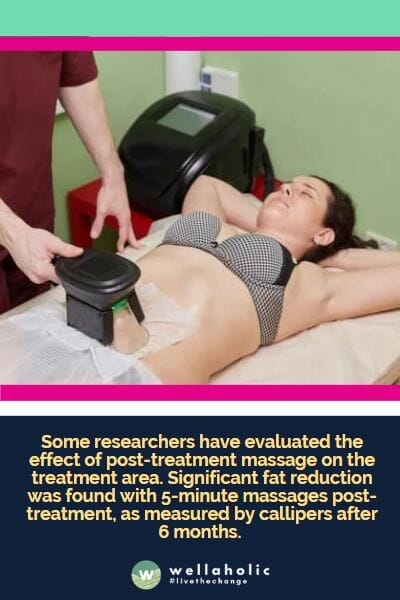
The Utilisation of Cryolipolysis and Its Efficacy
Clinical Efficacy of Cryolipolysis: Early Evidence
Clinical studies conducted to assess cryolipolysis’ effectiveness in reducing subcutaneous fat tissue thickness consistently align with preclinical data. A 2009 study involving 32 subjects demonstrated an 84% fat reduction based on photographic assessment four months post-treatment. Notably, no side effects were reported. Further studies continued to provide evidence of significant fat tissue reduction at 2 and 6 months post-treatment. A multicenter retrospective study reported an 86% improvement in photographic documentation and a 23% reduction in calliper measurements for most of the subjects. The treatment was notably effective in the abdomen, back, and waist areas. Other studies have evaluated fat volume reduction after cryolipolysis, with significant findings.
Long-term Effects and Common Treatment Areas
Despite consistent evidence for cryolipolysis’s efficacy, its long-term effects remain understudied at a large scale. One notable case study observed the persistent effect of fat reduction on two patients for five years after therapy, irrespective of body weight fluctuation. Cryolipolysis is commonly applied to the abdomen, bra roll, lumbar area, waist, inner thighs, mid-knee, peritrochanter area, arms, and ankle. Observations 2 – 6 months post-treatment have reported significant reductions in calliper measurements and subcutaneous fat tissue volume in these treatment areas.
Increasing Cryolipolysis Efficacy: Post-Treatment Massage and Multiple Sessions
Additional treatment practices have been studied to increase cryolipolysis efficacy. Some researchers have evaluated the effect of post-treatment massage on the treatment area. Significant fat reduction was found with 5-minute massages post-treatment, as measured by callipers after 6 months. Controlled trials compared the efficacy of an additional 2-minute massage versus standard cryolipolysis alone, revealing greater fat tissue reduction in the massage group. However, this difference gradually lessened over time. Similarly, while multiple treatment sessions have been reported to increase fat tissue reduction, the impact was not significantly higher than single procedures.
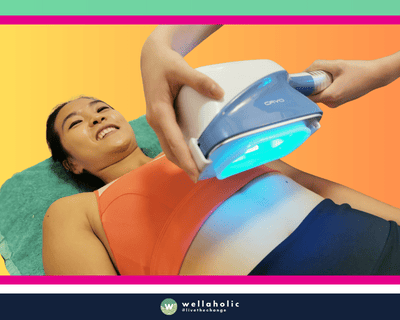
Efficacy Comparison with Other Non-Invasive Fat Reduction Methods
In recent years, literature have supported the usage of non-invasive fat reduction methods as a replacement instead of adjunction to liposuction which is known for higher risk of side effects and complications. There are 4 leading non-invasive fat reduction methods in the market, including LLLT, cryolipolysis, RF and HIFU.
In a systematic review by Kennedy et al., cryolipolysis has found to be more superior than the other non-invasive procedures in achieving fat reduction on abdomen area with average 6.86 cm decrease in circumference, as compared to LLLT (2.15 – 6.83 cm), HIFU (2.1 – 4.7 cm), and RF (1.4 – 4.93 cm). Furthermore, similar findings reported for inner thighs which cryolipolysis has the highest circumference reduction rate 5.78 cm in combination with shock waves, compared with 2.97 – 3.81 cm in LLLT, 1.6 cm in HIFU and only 1.2 cm in RF.
On the other hand, LLLT has shown better effectiveness in reducing arm’s subcutaneous fat with 3.7 cm circumference reduction, higher than cryolipolysis with only 2.75 cm. However, in terms of overall patients’ satisfaction rate, cryolipolysis is leading with 80 – 100%, followed by RF (71 – 97%), HIFU (47.5 – 85%) and LLLT (31.9 – 80%) [5]. Therefore, with the highest efficacy and satisfaction rate, cryolipolysis can be the first line treatment for non-invasive fat reduction.
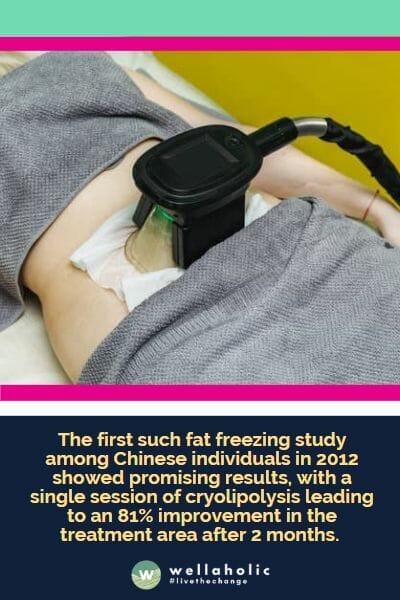
Efficacy and Safety Profiles in Asian Population
Cryolipolysis: A Focus on Caucasians
Most clinical studies of cryolipolysis have been centered on Caucasian subjects. A report that detailed the clinical and commercial experience with cryolipolysis found that 67% of subjects were Caucasian, with only about 4% being Asian. Diverse Fitzpatrick skin types were represented in the study, with 40% having type II and 42% having types III, IV, and V, common among the Asian population. Interestingly, the study found no significant difference in cryolipolysis’ efficacy or side effects across these diverse groups. No pigmentary changes were observed post-treatment in all skin types, disproving the initial hypothesis that darker skin types would experience more pigmentary disorders post-cryolipolysis.
H3: Cryolipolysis in the Asian Population: Early Studies
Despite the majority of studies focusing on Caucasian subjects, a few investigations have been conducted among the Asian population. The first such study among Chinese individuals in 2012 showed promising results, with a single session of cryolipolysis leading to an 81% improvement in the treatment area after 2 months. However, a second treatment session only provided minor additional fat reduction. Side effects observed were limited and included erythema, hematoma, and numbness, but no pigmentary changes were noted.
Recent Reports on Cryolipolysis among Asians
Further studies among Asian populations have continued to examine cryolipolysis’ efficacy and safety. A 2013 report on cryolipolysis use among premenopausal Korean women noted a 19.5% fat tissue reduction with only minor side effects. Studies in Thailand in 2015 used a new prototype handle to treat excess fat on arms and thighs, with observed circumference reduction and only minor side effects. A 2017 Korean study also reported effective submental fat reduction with cryolipolysis, with the majority of participants experiencing a significant decrease in tissue thickness. The side effects observed were minimal, with no risk complications such as purpura, pain, paresthesia, and post-inflammatory hypopigmentation. These studies collectively suggest that cryolipolysis has the same efficacy and safety profiles among Asian populations with darker skin types as among the Caucasian population.

Conclusion
Cryolipolysis is a novel and effective method for non-invasive local subcutaneous fat reduction with highly selective cold-induced adipocyte apoptosis as the main principle without harming the surrounding tissues. Various preclinical animal studies and clinical trials have shown the effectiveness and efficacy of this treatment in reducing excess fat with consistent results in many populations.
This procedure has a better safety profile in comparison with liposuction, and it is applicable in a variety of races regardless of their skin colour.
Overall, cryolipolysis has higher efficacy and become leading among non-invasive fat reduction methods. Although only limited data available in the Asian population, cryolipolysis has shown good efficacy and safety profile, this might become the first treatment choice for patients who opted to do body contouring.
Source
- National Library of Medicine | Open Access Maced J Med Sci. 2019 May 15; 7(9): 1548–1554.
- Utilisation of Cryolipolysis among Asians: A Review on Efficacy and Safety
- Imam Budi Putra,* Nelva Karmila Jusuf, and Nani Kumala Dewi
Frequently Asked Questions (FAQ)
1. What Makes Cryolipolysis a Preferred Choice for Fat Reduction in Singapore?
Cryolipolysis, also known as fat freezing, has gained popularity in Singapore due to its non-invasive nature and effectiveness in reducing stubborn fat. It’s a suitable option for those looking for a safe alternative to surgical procedures like liposuction. The treatment is FDA-approved and can reduce fat thickness by up to 20% in a single session, making it a preferred choice for body contouring.
2. Is Cryolipolysis Effective for All Skin Types, Including Asian Skin Tones?
Yes, cryolipolysis has been shown to be effective and safe for various skin types, including Asian skin tones. While earlier studies primarily focused on Caucasian subjects, recent research indicates that cryolipolysis is equally effective for Asian populations, with minimal risk of side effects like hypopigmentation, even in darker skin.
3. How Does WellaFreeze™ 360 Advanced Fat Freezing Differ from Traditional Cryolipolysis?
WellaFreeze™ 360 represents the latest advancement in cryolipolysis technology. It uses 360° surround cooling technology to target fat cells more effectively, offering up to 34% fat loss per session. This newer model is designed to treat multiple body parts concurrently and requires only 30 minutes per session, enhancing both efficiency and comfort.
4. Can Cryolipolysis Help in Reducing Fat in Specific Body Areas?
Cryolipolysis is highly effective in targeting specific body areas where fat tends to accumulate, such as the abdomen, thighs, arms, and under the chin. It’s particularly beneficial for those areas that are resistant to diet and exercise, offering a targeted approach to fat reduction.
5. What Are the Long-Term Effects of Cryolipolysis?
Long-term studies indicate that the effects of cryolipolysis can be lasting. In some cases, the reduction in fat cells has been observed to persist for years after the treatment, provided the individual maintains a stable weight and healthy lifestyle.
6. How Does Cryolipolysis Compare with Other Non-Invasive Fat Reduction Methods?
Cryolipolysis has been found to be more effective than other non-invasive fat reduction methods like LLLT, HIFU, and RF, especially in reducing fat in the abdomen and inner thighs. It also boasts higher patient satisfaction rates, making it a leading choice for non-invasive fat reduction.

Serene Chiam, Aesthetic Director
Serene Chiam is the Aesthetic Director at Wellaholic, a well-known aesthetic chain in Singapore. She has more than ten years of experience in the aesthetics industry. With a Bachelor of Health Science (Aesthetics) and CIDESCO certifications, she expertly combines scientific knowledge with practical skills. Serene is known for her personalized approach to beauty, ensuring each Wellaholic client’s journey is unique and transformative. Her significant contributions have been pivotal in establishing Wellaholic’s reputation for excellence in aesthetic wellness.
Contact Serene at support@wellaholic.com
GET IN TOUCH
Book Now Pay Later

WellaFreeze™ 360 Advanced Fat Freezing
- ⭐ Latest 4th Generation Freezing. WellaFreeze™ 360 advanced fat freezing uses the latest fat freeze technology for the highest fat reduction per session.
- ⭐ Up to 34% Fat Loss Each Session. Increase in percentage of fat loss due to newer technology and coverage.
- ⭐ 360° Surround Cooling Technology. The handles or cooling cups can be adjusted to fit all body curves and contouring for best freezing.
- ⭐ Breathing Technology Reduces Bruising. “Breathing” technology improves freeze while minimising bruising from the suction.
- ⭐ Shorter Time Needed. Each duration is reduced from typical 60 minutes to just 30 minutes.
- ⭐ Award-Winning. Wellaholic’s treatments have been recognized by top beauty publications such as Daily Vanity, Beauty Insider, and Tropika Club Magazine.
- ⭐ Over 2000 Verified Customer Reviews. Wellaholic has over 2000 positive reviews from customers, and >50% are repeat customers.
